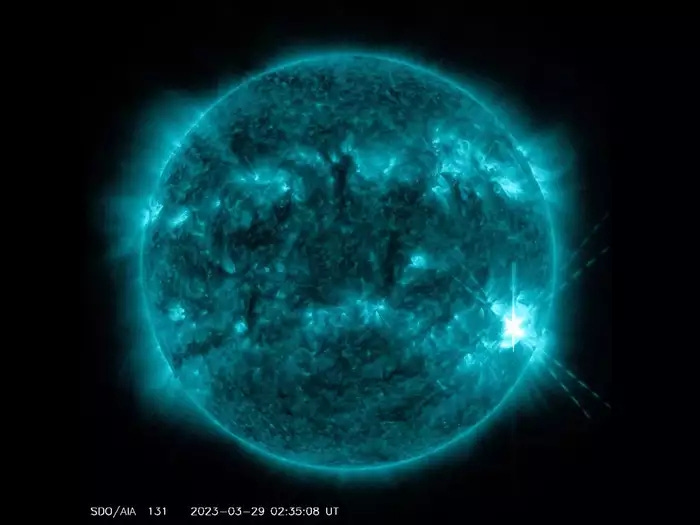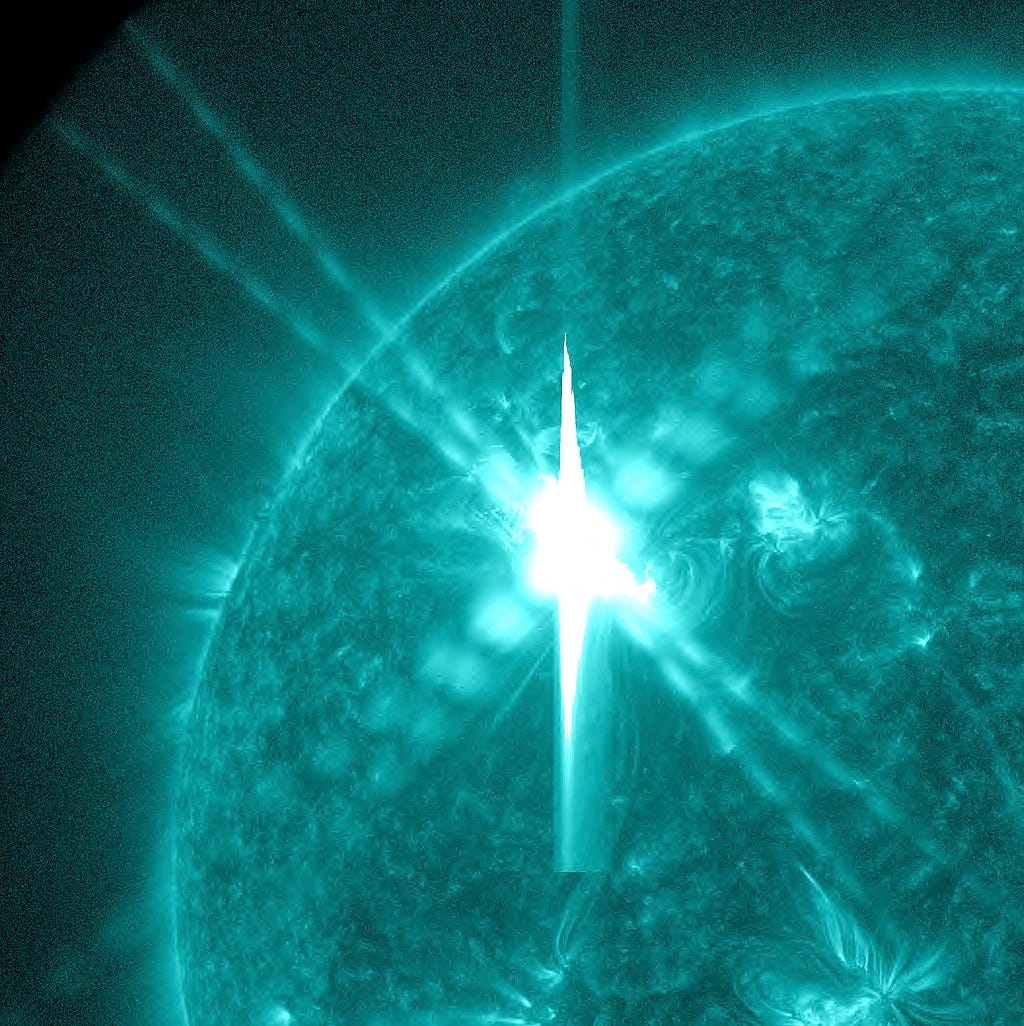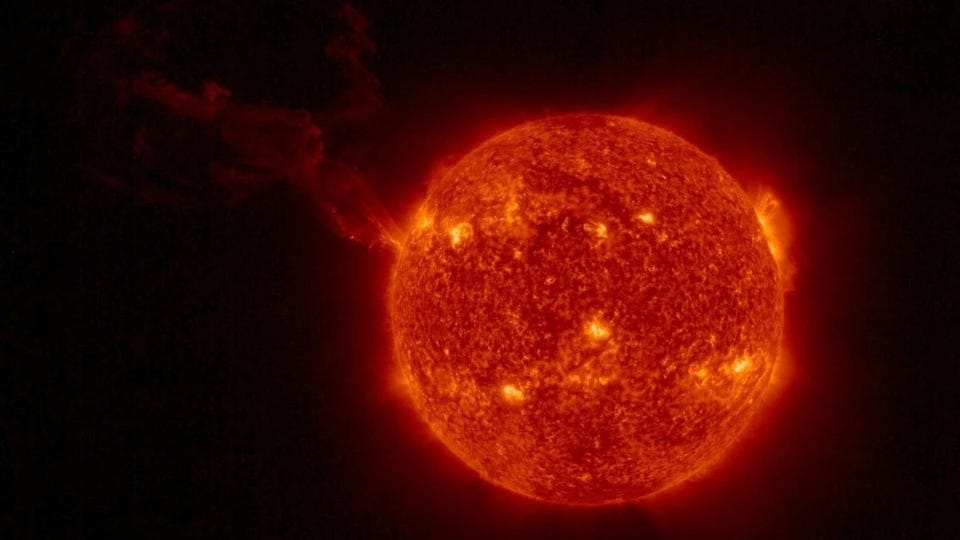Solar Flares: What Determines an X-Class?
Understanding what is a solar flare and how it is classified
We have mentioned earlier about something exciting for space and astronomy fans!! The above image is a glimpse of what is coming up! Click here for more details.
Recently, Sun sent out a powerful “X-class” solar flare that peaked at 8.03 AM on Wednesday, March 29 (IST). The flare was classified as an X1.2 flare. The X-class denotes the most intense flares. Let’s understand what are solar flares and how have scientists classified them.

Solar flares refer to massive eruptions on the sun that release energy, light, and fast-moving particles out into space. Typically, these flares coincide with magnetic storms on the sun known as coronal mass ejections (CMEs). The frequency of solar flares tends to increase every 11 years or so, and presently, the sun is headed towards another solar maximum, predicted to occur around 2023-24. Consequently, we can expect more solar flares to occur, varying in size, with some being significant enough to emit radiation that reaches Earth.
Solar flares are categorized according to their strength, and the most massive ones are referred to as "X-class flares." This classification system divides solar flares based on their intensity, with A-class being the smallest (near background levels), followed by B, C, M, and X. Each letter signifies a ten-fold increase in energy output, similar to the Richter scale used for earthquakes. As a result, an X-class flare has ten times the strength of an M-class flare and 100 times the intensity of a C-class flare. Each letter class is further divided into a more precise scale ranging from 1 to 9.

Solar flares that fall under the C-class and smaller categories are too weak to have any significant impact on Earth. However, M-class flares can cause brief radio blackouts near the poles and minor radiation storms that pose a potential risk to astronauts. The most potent flares are classified as X-class flares, and they can reach power levels more than ten times greater than an X1. This means that X-class flares can go higher than 9 on the classification scale. The strongest solar flare recorded using modern measurement techniques occurred during the last solar maximum in 2003, with a power level exceeding the measuring sensors' maximum limit at X28.
The most massive X-class flares are the most significant explosions in the solar system, and they produce spectacular displays. When the sun's magnetic fields intersect and reconnect, loops, many times larger than Earth, can shoot off the sun's surface. During the most massive events, this re-connection process generates as much energy as a billion hydrogen bombs.
When directed towards Earth, such flares and associated CMEs can cause long-lasting radiation storms that may harm satellites, communication systems, ground-based technologies, and power grids. X-class flares can trigger radio blackouts worldwide and long-lasting radiation storms. For example, the X1.2 solar flare that occurred on March 29th affected technology networks across vast regions of southeast Asia, Australia, and New Zealand. Consequently, it is evident that the X1.2 flare was not even the strongest flare that the sun can produce, yet it already had a significant impact on technology networks in many parts of the world.

Solar activity has been increasing in recent weeks and the Earth was hit by a powerful solar storm on March 24 that caught many space weather forecasters off guard. According to the US Space Weather Prediction Center, this trend may continue as they have issued an alert for potential solar storms on April 1, 2, and 3 in their 3-day weather forecast. However, predicting space weather remains highly unpredictable, and the NOAA (National Oceanic and Atmospheric Administration) has made incorrect forecasts before. It's important to note that solar flares and storms not only cause radio blackouts and chaos, but can also "supercharge" the dazzling auroras.




